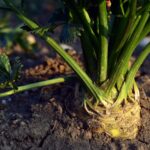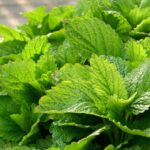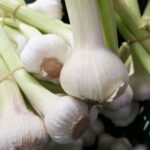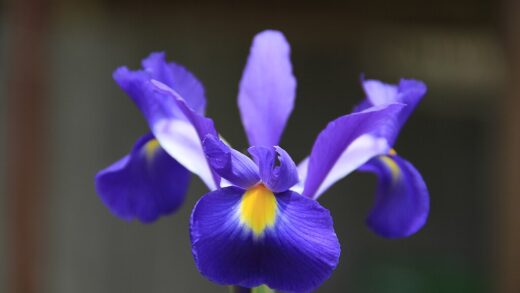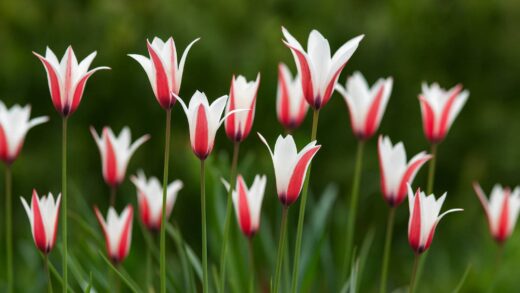The artichoke, this majestic vegetable of Mediterranean origin, gives the impression of a drought-tolerant, hardy plant in its appearance, but for abundant and high-quality yields, proper water supply is crucial during its cultivation. The plant’s deep, powerful root system does indeed help it absorb water from deeper soil layers, yet the development of large, tender, and fleshy flower buds expected in commercial cultivation requires balanced and continuous moisture. The consistency of the water supply directly impacts the size, flavor, and texture of the yield, making it one of the most critical elements of cultivation technology. Improper irrigation practices not only reduce the quantity of the harvest but can also jeopardize the overall health of the plant.
To understand the water requirements of the artichoke, it is essential to be familiar with the concept of evapotranspiration, which refers to the combined process of evaporation from the soil surface and transpiration from the plant. The artichoke’s large, broad leaves create a significant surface area for transpiration, leading to increased water loss, especially in hot, dry, and windy weather conditions. The intensity of solar radiation, air humidity, and air movement all influence the rate of the plant’s water release, meaning that despite its rugged exterior, the artichoke is actually quite a thirsty plant. A successful grower must continuously monitor these environmental factors to fine-tune the irrigation strategy.
The plant’s water demand varies significantly in different phenological phases. In the initial period after planting, the establishment phase, young seedlings require regular but smaller doses of water for stable rooting and stress-free initial development. This is followed by the vegetative growth stage, when the plant develops its foliage; this period has the highest and most continuous water demand. During the critical period of flower bud, or “head,” formation and growth, water deficiency drastically impairs quality: the buds may remain small, fibrous, and bitter, and the plant may bolt prematurely.
The type of soil fundamentally determines the approach to water management and irrigation. Looser, sandy soils have excellent drainage but can only store water for a short time, thus requiring more frequent irrigation with smaller amounts of water. In contrast, denser, clay soils retain moisture better, so irrigation can be less frequent but should be deeper to saturate the entire root zone and avoid waterlogging. The ideal is a well-draining, nutrient-rich loam soil that balances water retention and the aeration necessary for the deep root system.
Irrigation systems and methods
Several irrigation methods can be used for artichoke cultivation, and the most suitable choice depends on the size of the cultivation area, soil conditions, and available resources. Traditional surface irrigation methods, such as flood or furrow irrigation, while having lower investment costs, operate with significant water loss due to evaporation and uneven distribution. Furthermore, wetting the entire soil surface promotes weed growth and the development of soil-borne fungal diseases. Sprinkler irrigation is also an option, but wetting the foliage also increases the risk of diseases.
More articles on this topic
The most efficient and water-saving solution today is micro-irrigation, especially drip irrigation. This technology delivers water directly to the plant’s root zone, minimizing losses from evaporation and runoff. By using a drip system, the area between the rows remains dry, which inhibits weed growth and keeps the foliage dry, significantly reducing the chance of fungal diseases such as powdery mildew. The system allows for precise water application, which can be adjusted to the plant’s developmental stages, optimizing water use.
Although sprinkler irrigation is less water-efficient and increases the risk of diseases by wetting the foliage, it can still be an effective solution for large areas. The disadvantages of the system include that windy weather can significantly worsen the uniformity of water distribution, leading to overwatered and underwatered spots within the field. In some cases, especially in hot climates, sprinkler irrigation can have a secondary benefit of cooling the crop canopy, which can reduce damage caused by heat stress during the hottest parts of the day.
Modern irrigation technologies, especially drip systems, offer another significant advantage: the possibility of fertigation. This method allows for the application of water-soluble nutrients along with the irrigation water, directly to the root zone. Fertigation is an extremely efficient way to nourish plants, as nutrients can be supplied in small doses according to the plant’s needs during critical growth phases. With this method, nutrient use efficiency can be maximized while minimizing environmental impact and fertilizer waste.
Irrigation timing and amount
Determining the correct timing for irrigation is a cornerstone of successful artichoke cultivation. Although visual observation of the plant’s condition, such as slight wilting of the leaves during the midday hours, can indicate water deficit, this is often a sign of an already existing stress situation. A more scientific and reliable approach is based on a regular check of the soil moisture content. This can be done simply by taking the soil in hand and crumbling it, or by using more precise instruments such as tensiometers or soil moisture sensors, which provide accurate data on the water status of the root zone.
More articles on this topic
The frequency of irrigation and the amount of water applied at one time are influenced by a combination of several factors. These include the plant’s current developmental stage, weather conditions (temperature, humidity, wind), soil type and water-holding capacity, and the efficiency of the irrigation system used. During the peak period, i.e., in the summer heat and the phase of intensive growth, artichokes may need deep watering every few days. The goal is to keep the root zone, which can extend down to 60-80 cm, consistently moist but to avoid oversaturation and waterlogging.
As a quantitative guideline, an artichoke crop grown in a Mediterranean climate may require approximately 600-1200 mm of water throughout the entire growing season, depending on local conditions. This significant amount of water must be supplemented by irrigation in the absence of sufficient natural rainfall. Breaking down the total amount into weekly doses, especially during the peak consumption period, can provide practical help for growers in developing a precise irrigation schedule. Precise water management not only improves the quality of the crop but also increases cost-effectiveness.
Avoiding water stress is particularly critical during the head and bud formation period. Even short periods of drought can trigger premature bolting of the plant or lead to the produce being tough, fibrous, and unpalatable. At the same time, overwatering must also be avoided, as it creates anaerobic soil conditions, which can lead to root rot and nutrient leaching. Excessive water supply can ultimately be just as detrimental to the plant’s health and productivity as a lack of water.
Practical advice and the role of water quality
There are also effective practical methods for home gardeners or small-scale growers to ensure proper water supply. Mulching is one of the most important such techniques. A thick layer of organic mulch (such as straw, compost, or grass clippings) spread around the base of the plants helps to conserve soil moisture, suppress weeds, and keep the soil cool on hot summer days. This method can significantly reduce the frequency of irrigation and the amount of water used, while also improving the soil structure and nutrient supply.
The quality of the irrigation water is another factor that is often overlooked but extremely important. The artichoke is moderately sensitive to soil salinity. The use of high-salinity irrigation water can lead to the accumulation of salts in the soil, which causes osmotic stress for the plant, making it difficult to absorb water. Furthermore, excessive salt concentration can also be toxic, manifesting as stunted growth and scorching of the leaf margins.
If only water with a higher salt content is available, it is essential to ensure proper soil structure and excellent drainage to allow the excess salts to be leached below the root zone. In such cases, it may be necessary to apply a so-called leaching fraction, which means applying slightly more water than the plant actually needs, so that the excess washes through the soil profile, carrying the accumulated salts with it. In problematic areas, regular laboratory testing of the soil and irrigation water is recommended to monitor salinity levels.
In summary, the basic philosophy of artichoke irrigation is a balancing act between the plant’s Mediterranean heritage and its need for abundant moisture to produce a quality crop. A successful grower understands that irrigation is not just about applying water, but involves the complex management of the entire soil-water-plant system, based on careful observation, the use of appropriate technology, and timely interventions. This holistic approach ensures a healthy plant stand and a rich, high-quality harvest.








